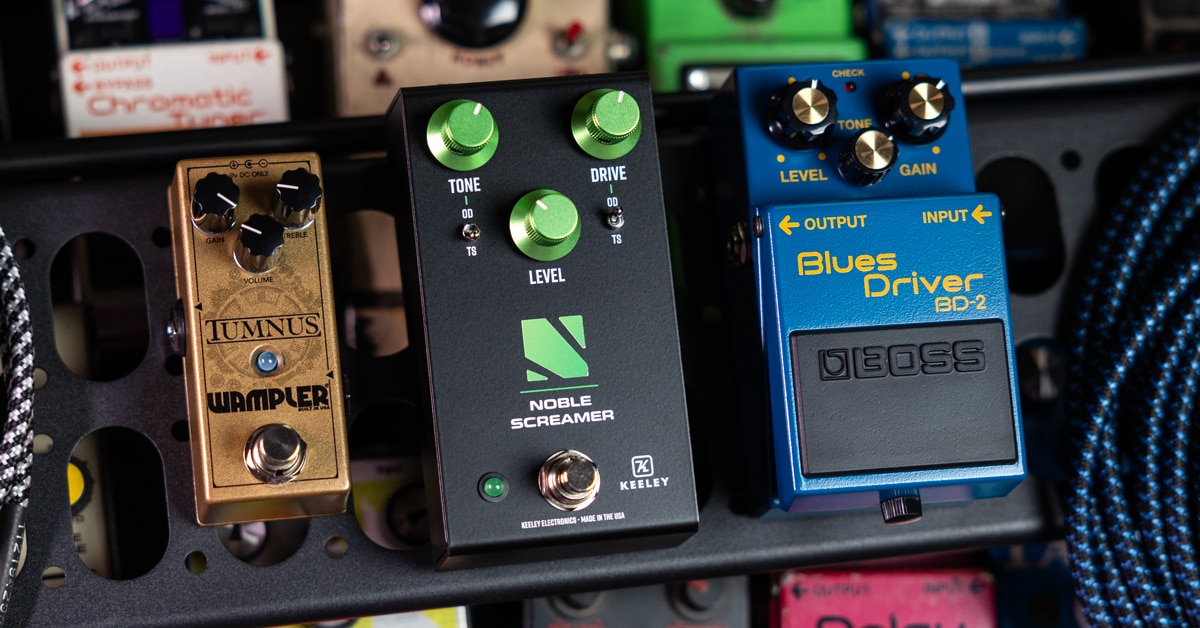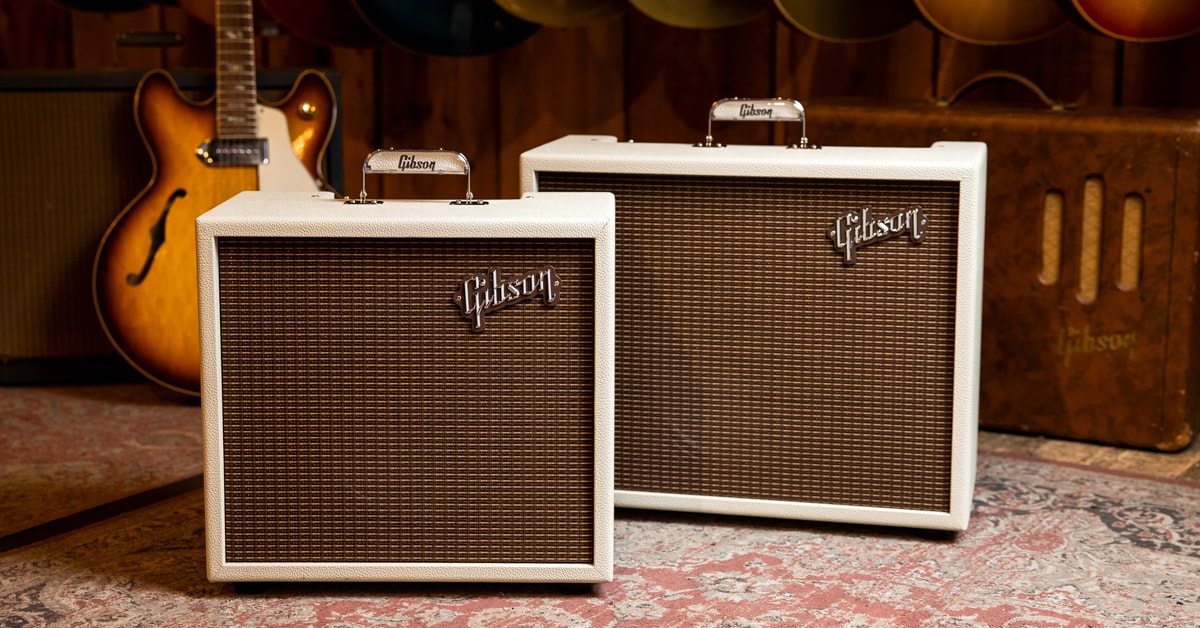Sometimes, a genius idea or a world-beating product simply won’t skyrocket to its well-deserved success without the right business or creative partner in tow.
For example, one shudders to think if we’d even know The Beatles at all if they kept drummer Pete Best. But Beatles + Ringo Starr = Beatlemania and legend. The same glories came to Billie Eilish and FINNEAS, Barbie and Ken, Sonny and Cher, and, well—you get the idea.
As a “solo act,” Gibson began making amplifiers way back in 1935, summiting with the coveted yet cultish GA series amps of the early rock era, until ceasing production in 1967. Awesome amps, but unappreciated—even with cool names, such as Raider, Invader, Titan, Hawk and others. Gibson tried again in 2005, and made some wonderful-sounding amps, but through no fault of Gibson’s, the earth still did not move.
That all may change with the 2024 introduction of the Gibson Falcon 5 and Falcon 20 amps—a collaboration by Gibson and Northern California boutique-amp innovators, MESA/Boogie. Shazam!—peanut butter and jelly.
The future of the new Falcon amps is yet to be written, of course, but that future looks absolutely luminous.
Brought to the fore by Gibson’s acquisition of MESA/Boogie in 2021, the partnership was also nudged forward by a “Gibson Amp Club” within the company, the increasing values of their vintage amps and a somewhat overlooked sonic characteristic—when cranked to maximum volume, ’60s Gibson amps produce a uniquely riotous overdrive that is, in a word—ferocious.
The Falcon project was also championed by Gibson President and CEO Cesar Gueikian (who acquired a bunch of vintage examples for the company) and Vice President of Product Mat Koehler (a member of the Gibson Amp Club, a talented guitarist and an aficionado of the ’60s-era Gibson GA-19RVT amp).
“The MESA/Boogie acquisition basically added a layer where it was like, ‘Why would we not do the new amps with Boogie?’” explained Koehler.
Boogie’s contribution to the dynamic duo is two legends in the field of guitar amplification—Founder, President and Designer Randy Smith, and Director R&D Doug West. Here, West and Koehler—yes, another duo—share how the Falcon project kicked off, as well as its design strategy, tone challenges and breakthroughs.
With any luck, the Falcon 5 and Falcon 20 will add “hitmaking duo” to their industry status.
So, how did the Falcon project take flight?
Doug West: When Cesar approached us about acquiring MESA/Boogie three years ago, he mentioned that getting Gibson back into amps was one of his dreams. He said they had tried it before and had gotten somewhere, but not where they wanted to get.
Basically, he was saying, “Would you guys be willing to do this?”
We really liked Cesar, and we liked the whole idea, so we joined forces. He sent us a vintage Gibson GA-19RVT Ranger that was a really good-sounding one, especially for power overdrive, and we were like, “Wow. This is a great reference.” Then, Glenn Franzen—who worked for Gibson for many years and is an aficionado of these amps—had curated a small collection, which Cesar ended up buying for additional references. The next thing you know, it’s, “Hey, Glenn’s here with a pile of amps.” [Laughs.]
We played through all of them for a whole day, identifying what we liked about each one, and picked the two we thought sounded the best—that original GA-19RVT and a GA-20 Ranger. From there, we just listened and listened, absorbing the vibe and saturating ourselves in vintage Gibson tone.
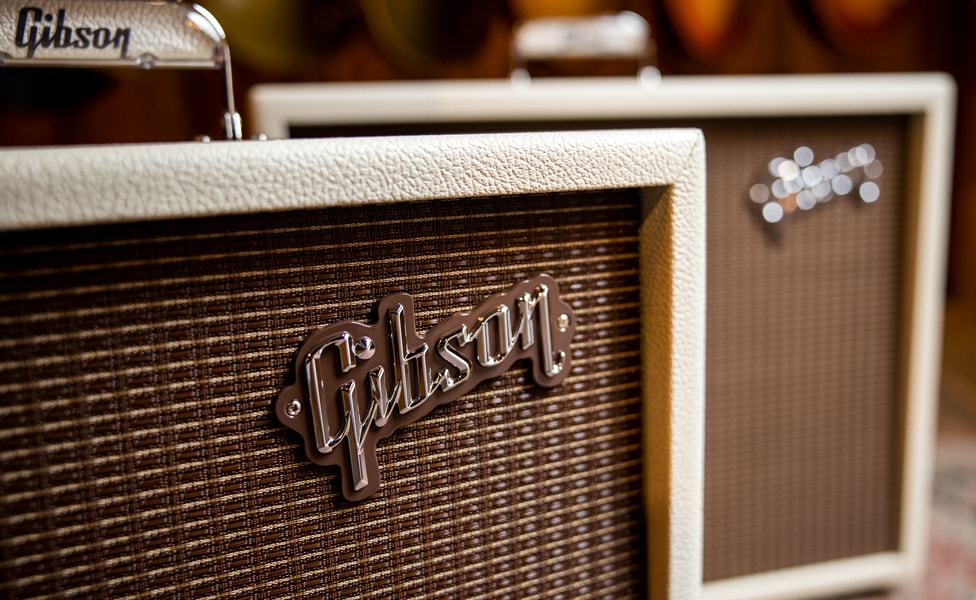
Mat Koehler: Honestly, if we go back to the genesis of this project, it’s about this casual Gibson Amp Club within the company. We never had a formal name for it, but we realized that every time the group was traveling, we’d all be looking for vintage Gibson amps—especially the tweed models from the late ’50s and early ’60s. It was almost like a competition between us, and the holy grail for all of us was the GA-19RVT Falcon.
Why that particular amp?
Koehler: There are a few reasons. One, it has the perfect combination of features. Then, in both Gibson and in amp history, it's the first combo amp with reverb. It's also rare. There were only 204 Gibson GA-19RVT amps made in 1961. This is why we all got very excited whenever we found one.
So, would the club members argue about which one of you discovered the best version?
Koehler: I think I took the title of finding the cleanest one [laughs], but they all had slightly different characters. I should add that while we all agreed the GA-19RVT was the one to pursue, “GA-19RVT” doesn’t exactly roll off the tongue. We were also aware the GA-20 is probably the most recognized Gibson amp—even considering the original didn’t have onboard reverb. So, we opted for a combination of a GA-19RVT and GA-20.
I imagine designing something like the Falcon 20 is different from developing a complex amp such as the MESA/Boogie Mark VII. When you first looked at that original GA-19RVT circuit, what was your take?
West: Initially, Randy was like, “Well, yeah, I can do this circuit in my sleep.” He wasn’t coming from an arrogant place at all, more from a humorous place, because Randy is used to working on amps like the Mark VII that is so much more complex, with its multiple channels and features. Even a Boogie Mark I is more complex than the Gibson GA amps. My take was more, “Man, let’s not assume anything yet, because I think this could be deeper than we imagine.” And it was.
Even though the controls are few—and the layout is simple and straightforward—integrating aspects such as chassis design, serviceability, reverb and tremolo, speaker and cabinetry choices, sonic refinements and preservation of the originals’ nuances, made the project as deep as any of our amps, just in a different way.
Koehler: Oh, I’m sure when Randy looked at the original circuit, he had some amount of skepticism—such as, “What am I going to do with this?” But a week later, Randy called and said, “I’ve got it. I’ve got the heart of it. I’m there.” He was like a man on fire.
West: Part of the beauty of the original Falcon amps is their simplicity. There's not much to the preamp, but where the magic happens is in driving the power amp section. As it draws more voltage, it kind of self-regulates and sags. It actually collapses in on itself. So, getting the new amps to do that in a beautiful and musical way—just like the originals—was a big part of the goal.
Also, the reverb on our favorite GA-19RVT was gorgeous in a vintage-voiced way. It was really deep and cavernous. That took some serious listening and work to recreate without affecting the overdrive characteristics we loved in the Ranger reference that didn’t have reverb. Then, there’s the tremolo—a weird and quirky circuit that is sensitive and finicky. The tremolo works in the driver and power section, so it required a lot of tweaking in there to get it operating in a good range, as well as in a smooth and musical way.
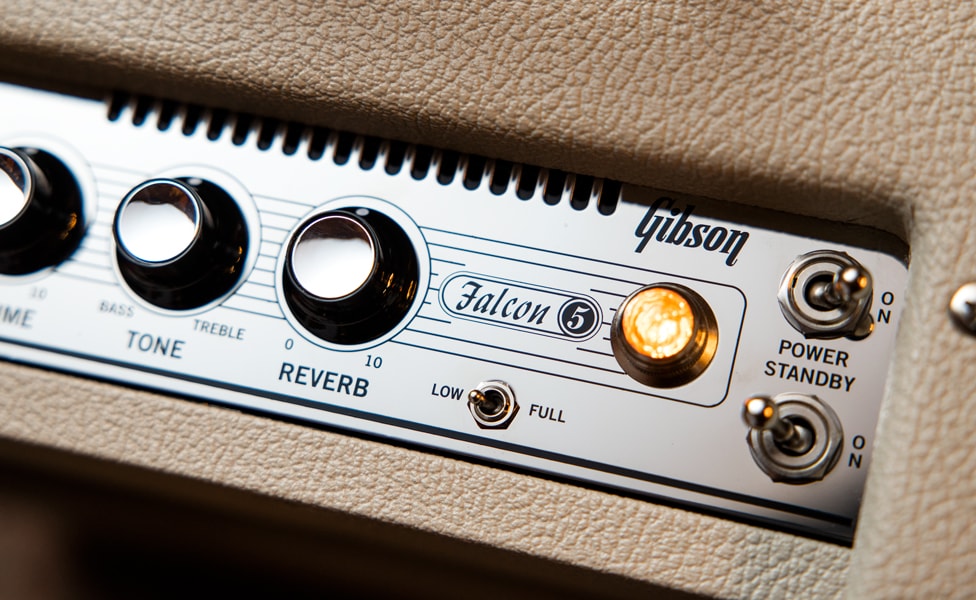
Was there any trepidation on the part of the team about diving into an amp that’s significantly different than the typical Boogie amplifier?
West: Not at all. Everyone was super excited. The Falcon was the new kid in town, and it brought new perspectives and processes for all of us. I feel doing these has been a great learning experience for everyone here. The principles are the same as our multi-channel amps, but the specifics are different. Modern high power, high gain amps present many challenges in production—from preamp tube stability to physical solidarity and everything in between. Many of those factors are also present in the Falcons. But as the Falcons are low-power designs, we looked extra closely at things such as making sure the clean power they have is delivered, that they transition to clipping smoothly and musically and that the reverb tank and speaker are excellent. On an amp that does a couple of things great, it’s really important that it can truly deliver.
I doubt the GA-19RVT’s original designers were envisioning an amp that “blows up” to create a unique and savage overdrive tone.
West: Oh, no [laughs]. I’m sure they were thinking about a Gibson L-5 and clean rhythm sounds.
Is there a way to give someone a brief, elevator pitch about the tone of the new Falcon 5 and Falcon 20?
West: There’s a really smooth transition from clean to overdrive. It’s an almost seamless entry into the whole overdrive and clip thing. That would be one way I'd describe it. Also, the reverb and tremolo are truly amazing, unique and useful. I think that side of the amp is awesome, and it shouldn’t be overlooked when using clean or dirty sounds. But, given that I think more people will use the Falcon amps for overdrive tones more than clean sounds, I can describe it another way—as a throaty growl. It also has a percussive bounce and a sweet bloom that add up to one fun-to-play, easy-to enjoy, grab-and-go amplifier.
Koehler: It's a unique and a usable sound for studio or stage. On the clean side, it’s that coveted dark midrange tone. When pushed—well, that's when the unique part of the Falcon comes out. You get this fire-breathing compressed thing where it's just roaring, but it's not over the top.
How did the Gibson and MESA/Boogie teams interact regarding status reports and revisions?
Koehler: We did not consider ourselves the experts in providing ultimate feedback. Randy, Doug and their team have been doing this for a very long time, and we trust them implicitly. Those guys are perfectly capable of listening to these amps and letting us know when they have something viable. We leave it to the experts.
But we did have multiple of meetings a week to monitor progress, and Randy would tell us about each breakthrough he had experienced. Then, the prototypes came to the office, and everyone was, “This is amazing.”
But Randy and Doug said, “I think we can make it even better.”
So, they send the next prototype, and we're like, “Oh, man, it's even better!”
Those guys are so positive, but they have this thinly veiled objective about always going for perfection. They’ll say something is great while already planning to take it to the next level. I’d say there were four or five rounds of subtle tweaks before we decided, “Okay. Okay. It’s there.”
West: It has been a wonderful collaboration. Mat is a heavy. He has so much knowledge about Gibson, all sorts of vintage gear and the marketplace. When Randy and I took the Falcons to Nashville, I got to see Mat play for the first time. He just floored me. He ripped out a couple of things and made the amp sound like I would dream of making it sound. He's such a great player. It was funny, because he played one long line, and then shut down the volume control on the guitar. He had this shocked look on his face. He did one more ripping run, and he turned off the volume again. Then, he said, “Don't change a thing.”
Koehler: The other side of this I didn’t mention before was that they made the amps quieter. Any vintage, single-ended amp is going to be buzzy and crackly when your guitar volume knob is all the way down. But when Randy brought us the first production amp, we were like, “This can’t be right. Are all of the amps this quiet?” We were blown away. So, that's an unintended benefit of having a master amp builder take on this project.
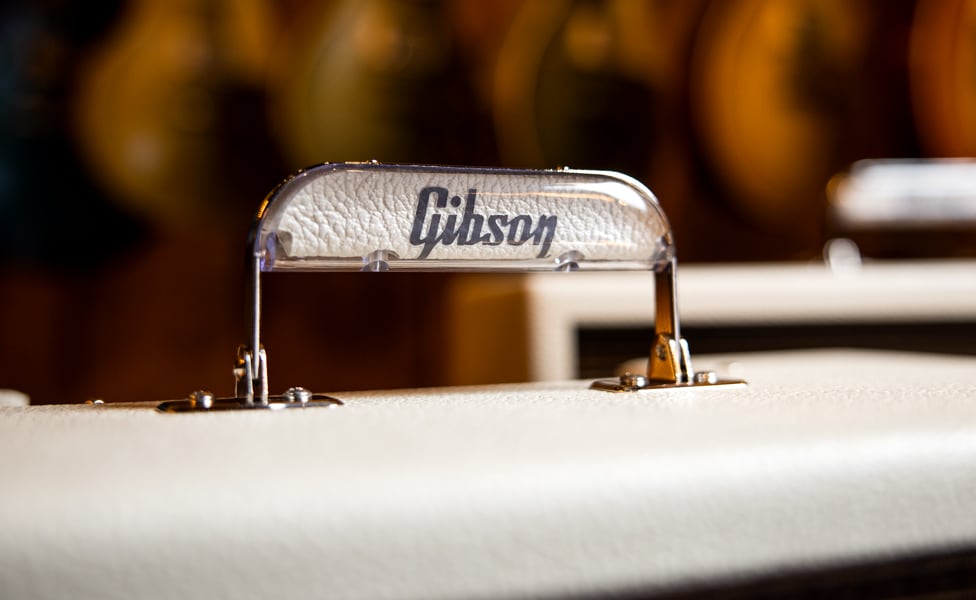
Was there a main guiding principle driving the refinements?
Koehler: Randy has an automotive-racing background, and what I think constitutes hot rodding to him is finding ways to get more horsepower out of an engine. While he's not adding Rectifiers to the Falcons or anything like that, he is trying to heighten the clean sounds and compress the overdrive even more.
West: We tried to reshape things to produce a little more attack definition, but not go far enough to where we ruined the original vibe. That was the other thing—we didn’t want to get too clinical about things. We were trying to channel vibes. This amp has to start out clean, have an organic and sweet transition to overdrive, finally implode on itself at the top of the volume control and sound great throughout. That’s what is so cool about it. So, my feeling was, “Don’t ruin it.” And, by the way, I think we bested the vintage GA-19RVT.
Specifically then, how do the new Falcons surpass a vintage GA-19RVT?
West: Right out of the gate, it was improving the construction, because we wanted them more consistent, more serviceable and sturdier—up to today’s standards. The other way I would say we bested the original amps is in the ability of the Falcon 5 and Falcon 20 to track notes and stay tight—especially in the low end. You still get the cool bloom the original amps had, but the bass—and even the clean range at low volume levels—holds together much better on these new Falcons than it did on the original amps we were able to play. We also voiced the new amps with a bit more attack in the percussive mids, which helps clarify the sound of a guitar’s bass strings.
How does developing a modern amp that accurately mirrors a vintage original affect component selection?
West: When we're going for vintage-style sounds, we try to use vintage-type components where possible. Increasingly, there are some things that are becoming “unobtanium,” so we choose the closest equivalent construction-wise, and then tweak that specific area—or another part of the circuit—until we get the response we are after. This can take a while, as we try to exhaust every possible avenue for improvement—applying our experience to make sure there’s not some undiscovered gold yet to unearth. Thankfully, after doing this together for more than 40 years, Randy and I have had a lot of practice.
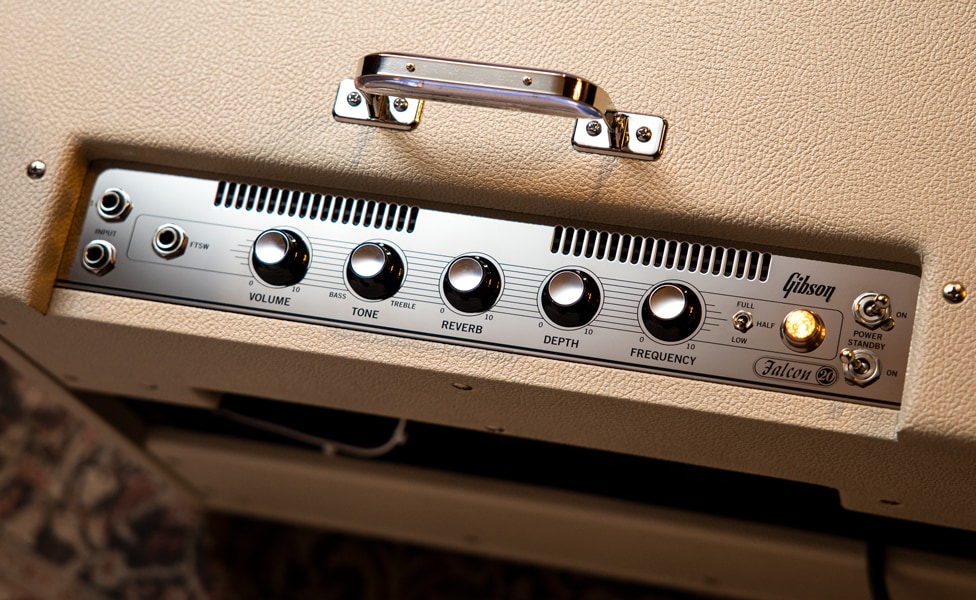
What were the challenges of adding reverb to the GA20 circuit?
West: You might think, “It's just reverb—what’s so difficult?” But any time you add reverb to a circuit that never had reverb, you're adding more circuitry, and that can change the sound. It can be difficult to get the reverb working right, keep all of the signal levels balanced and retain the same attack characteristics. And, for the Falcons, we need to ensure that trademark organic, throaty character was not diluted or lost.
For example, you have to pad down the signal and then boost it back up, because you can't send a huge signal through the reverb tank. We had to find a place in the circuit to do that—without compromising tone—and then we had to develop a great-sounding reverb that pays homage to the era of the early Gibson amps. For the mechanics, we tried a bunch of different reverb tanks, and we ended up going with a short, three-spring—which really surprised us. We thought it was going to be a long spring for the Falcon 20 and a short tank for the Falcon 5, but we ended up finding out—wow—the little three-spring is the tone.
How did you go about selecting speakers for the new Falcons?
West: We got really lucky there, because we used Jensen Blackbird Alnico 40s in the MESA/Boogie California Tweed some years back. Some of the original amps we got from Glenn and Cesar had Jensen speakers in them, as well, and—guess what?—the Jensen Blackbirds sounded incredible in the new amps. We stopped there. The Falcon 20 has a 12" speaker, but we also really love the 10" version used in the Falcon 5, because it has a bit more midrange attack and the top end is rolled off a little.
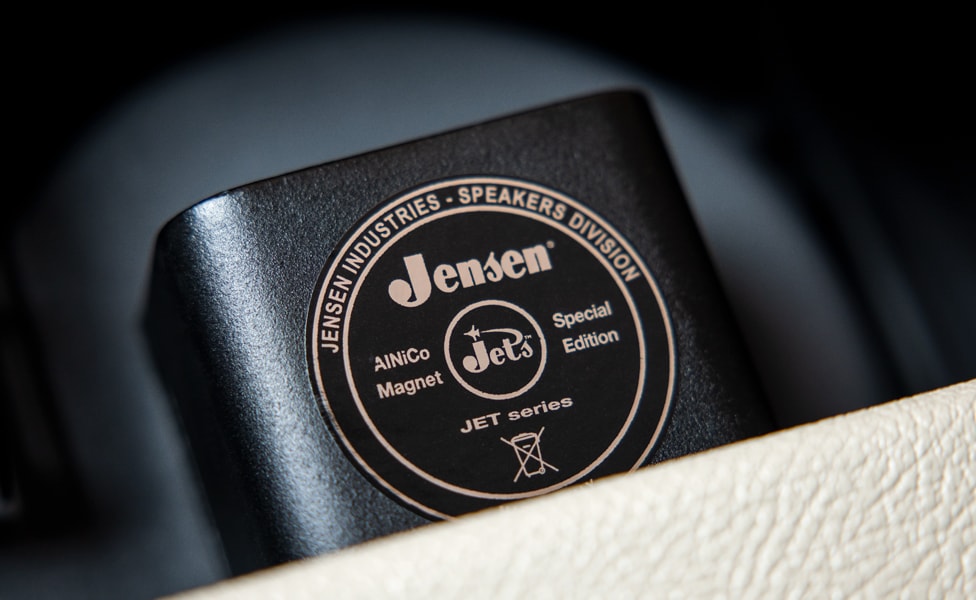
What about the 6V6 tubes?
West: There are not a lot of tubes in these amps—at least by MESA/Boogie standards—so we obviously had to get good ones into them. That meant we threw out a lot of tubes. We’ve always done that, because not all tubes are good-sounding, consistent, or rugged enough. So, we test them pretty rigorously in our custom-designed “Rototube” Tube Tester.
For example, during a quality control check, we discovered one of the early production Falcons didn’t sound great. We put it back on the bench, and the problem turned out to be a weak preamp tube. That was the only thing wrong with the amp. It’s somewhat akin to race cars. If you’re racing a four-cylinder car at top speeds, everything has to operate at optimum performance. Whereas, if you’re racing an eight-cylinder car at the same speeds, there may be a little more room for tolerances.
By the way, if you pop a 6L6 in the Falcon 5, or a pair of 6L6s in the Falcon 20, the wattage increases a little, and the tone gets more robust and authoritative. The 6L6s will not produce the same bloom and sweet clipping of the 6V6 tubes—and the 6V6 tubes are more in the character of the original amps—but you can give these amps a different kind of sound by just changing out the power tubes.
The cabinets are stunning. These are really retro-beautiful amps.
West: Quite honestly, the cabinets were a challenge. Cesar and Mat really wanted that super clean look without protective corners—like the originals. It’s gorgeous, but it was tough for us to wrap the vinyl at first, because our craftsmen are used to applying corners. We're still slow at it—compared to our own amps, anyway—and we’re still learning. But hats off to Gibson. Whoever was designing the look of the amps back then were true artisans. There were some amazingly beautiful fashion statements throughout the past eras of Gibson amps.
For the grille on the new Falcons, we decided to put our own spin on things and go with the oxblood color—which I think matches really well with the cream vinyl covering. The logo was another thing we wanted to improve, because we simply could not put a plastic logo on this beautiful amp. We felt it had to be substantial and sturdy, so we went with metal.
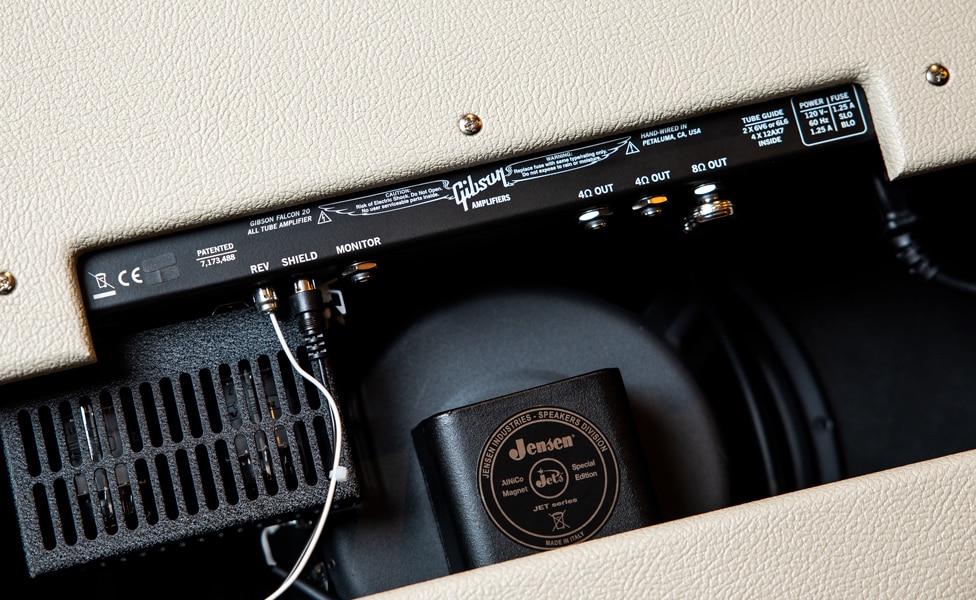
Any shareable intel on what’s next for the Gibson/Boogie collaboration?
Koehler: We always have a lot of irons in the fire on the Gibson side and on the MESA/Boogie side. Gibson is more traditional than MESA/Boogie’s legacy, of course. You’re not going to see a triple-rectifier Gibson amp. For Gibson, it’s more about making beautiful amps that are great tools. We are not trying to reinvent the wheel.
Whereas with Boogie, their history of innovation will keep going in all sorts of different directions. But I think we can continue bridging the two approaches and develop amps that deliver a modern playing experience with some vintage form factor and aesthetics.
For example, with the Falcons, our intention was simply out of pure passion for these amps, as well as wanting to do justice to the legacy. But once we got the amp into Randy and Doug’s hands, we knew they would be able to take it to the next level, and they did. That was huge, because if the new Falcon didn’t sound unique, there would be no reason to bring it into the market.
After all of the development, listening sessions and refinements, the Falcon 5 and Falcon 20 are now a reality. Does that give you a more informed perspective on what types of players will be drawn to these amps?
West: Who is the amp for? I think that’s simple. Anyone who wants to laugh out loud with joy as they play, because these amps are so fun. They are freeing and friendly—especially when they are cranked up into overdrive and sound like they’re imploding. Even your mistakes sound like total expression when you’re playing a Falcon. It’s the coolest sound ever.
Are the Gibson Falcons subjected to the infamous MESA/Boogie “hammer test,” where each amp is smacked repeatedly with the handle of a hammer to ensure they’re tough enough to withstand the rigors of touring?
West: Oh yeah—you bet. Every amp gets the hammer test before leaving here. It’s a MESA tradition and part of our meticulous testing methods.








